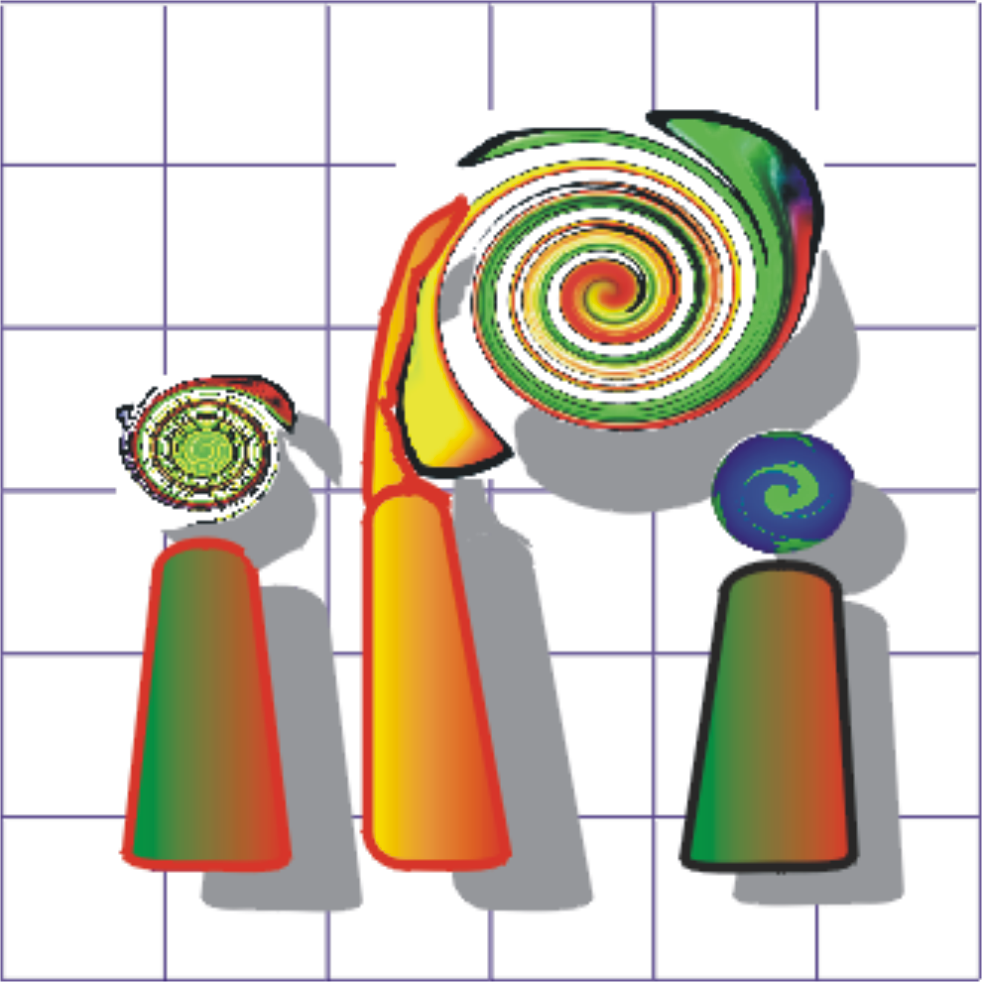Automatic extraction of vegetation in urban areas by analysis of the temporal behavior of airborne laserscanning signals
| Team: | J. Niemeyer |
| Year: | 2010 |
| Is Finished: | yes |
Motivation
In recent years airborne laserscanning became a standard technology to produce elevation models of large landscapes. Especially in urban areas the acquired three-dimensional point data (see fig. 1) is used for the derivation of advanced object information. Up to now, research mainly focused on the reconstruction of buildings, for example, to generate 3d city models. Several approaches were developed in this field of research. Nevertheless, for many important applications the restriction of modeling the buildings only by neglecting the vegetation impact will not yield satisfying results. A city model without vegetation, for instance, is not a suitable basis to run simulations aiming at noise propagation, flooding, or microclimate analysis. Concerning visualization aspects like tourist purposes or computer games, cities don't look natural without any plants. That's why acquisition and extraction of urban vegetation becomes more and more important.
Fig. 1: Aerial image (left) and the corresponding subset of the three-dimensional airborne laserscanner point cloud (right). The color shows the point height. | |
Laserscanning is an active measurement technology. By emitting a laser pulse and receiving the echo reflected on ground or objects, the range is derived by the signal’s time of flight. Nowadays, most airborne laserscanners register the first and the last echo of each pulse as well as the so-called signal intensity. Indeed, by using this information vegetation and building points can be separated, but in general a more detailed classification of vegetation is hardly possible. With respect to this issue, newest generation laserscanner systems have many advantages. Fast technical progress in sensor technology made it possible to acquire the temporal behavior of the received echo signal. The analysis of these full waveforms allows the separation of several objects in range direction, so that at least major individual branches of trees and shrubs can be discriminated. In particular, this additional information is an important advantage for vegetation classification tasks. Figure 2 shows a point cloud derived from full waveform signals. In the right figure you can see the high point density in vegetation areas of such data.
Fig. 2: Classified point cloud in ground (yellow), buildings (purple), vegetation (green) and fences (white). The right figure shows a threedimensional view of a building surrounded by vegetation. | |
Goals
Until now, analysis of full waveform laserscanning data in research was mainly focused on natural vegetation areas like forests. However, the purpose of this project is to develop an approach that derives a description of a whole city, which includes vegetation in particular. Prior knowledge such as GIS-data, like roads or building shapes, is assumed to be provided. Furthermore, the approach should use context knowledge like topological structures for a reliable classification. For example, the grouping of alley trees along a street or the boundary of enclosures by hedges can be exploited. Finally, the vegetation should be separated into groups like type, height, and crown shape in order to allow a precise modeling.


